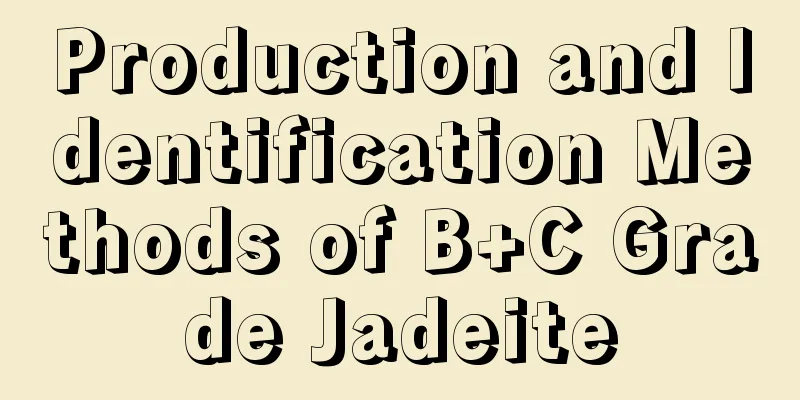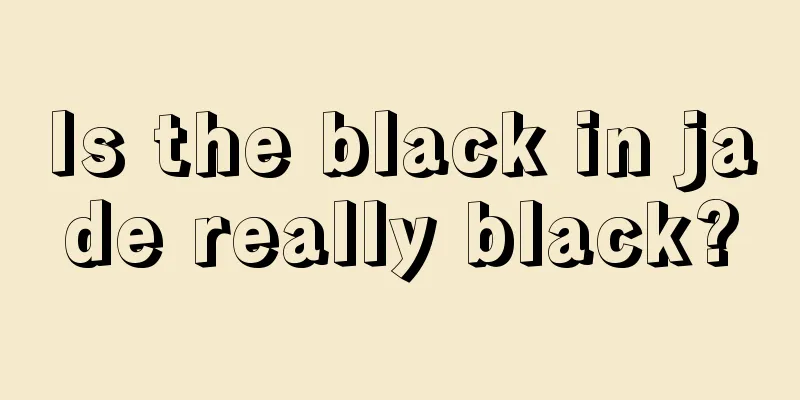Production and Identification Methods of B+C Grade Jadeite

|
The acid washing, dyeing and filling treatment of jade is often referred to as B+C treatment. There are many types of dyed colors, the most common of which is green. 1. Production method The B+C treatment method is better and more efficient than simple dyeing. The process feature is that after the jade is washed with acid and alkali, it is washed and dried, and then the loose jade is colored. It can be soaked in dye solution or painted with a brush. It can be colored in the required places, or it can be painted into color bands on the bracelet. It can be painted with a variety of different colors, and color can be added to the light green jade to make it more obvious. After being dyed and dried, the rough jade is then filled with glue, which not only improves its transparency and mechanical strength, but also seals the color in the resin glue, making the pigment less likely to fade, thus extending the service life of the B+C jade. Therefore, B+C jade has many color varieties and distribution forms, and is more similar to natural jade. 2. Identification characteristics of B+C dyed green jadeite Generally speaking, B+C jade is easy to identify. Green B+C jade has the characteristics of C jade in addition to the characteristics of B jade. The most typical identification characteristics are: 1.Filamentous green Green dye can only attach to the surface of the mineral particles that make up jade. The thickness of the green dye is very thin. In the direction vertical to the thin layer of green dye, the green color is most obvious and appears in the form of thin lines. Sometimes the green dye seeps into the cleavage joints of the jadeite grains, forming parallel green filaments. These features can be clearly observed using transmitted light. Natural green jade veins are composed of many green jadeite particles, so the green color veins usually have a certain width, can pass through many particles, and have a certain length. 2. Loofah pulp structure After jade is washed with acid, larger gaps are formed between the mineral particles. The dye is absorbed and precipitated on the surface of these mineral particles, forming a three-dimensional network structure. This feature can be clearly seen under side light. The structural features caused by this color do not exist in natural green jadeite. 3. Blurred ribbon boundaries B+C dyed green jadeite is often dyed into an uneven shape to imitate the appearance of natural green jadeite, but the boundaries of the green color bands (color spots) of B+C dyed green jadeite are relatively fuzzy, without clear edges, which is different from the green color bands of natural green jadeite. 4. Other features fcgc66 fcpf18 |
<<: How to distinguish A, B and C grade jadeite? Here is the simplest method!
>>: How to distinguish between B-grade and C-grade jadeite
Recommend
Affordable jade rings make you look like a big name
Since ancient times, Chinese people have been res...
How to judge jade carving? What is considered good?
Jade is judged by its "type, water, color, t...
Jade is unique and extremely beautiful!
Collection, as the name suggests, means to collec...
What does spring-filled jade look like? Why is it called Spring Jade?
When thinking of spring, many people’s first impr...
Good jade must meet the three characteristics of "good quality", "good color" and "good craftsmanship".
Jade is a type of jade. There are many types, wit...
Jade identification, all the methods you can learn in one go are here
First, the most direct way is to ask the merchant...
What is each stage of jade called? What does it look like? It’s all here!
The beauty of emerald, It runs through every stag...
Understanding the art of jade inlay and experiencing the beauty of icing on the cake
Inlay is a craft term. Inlay means to stick to th...
How to carve jadeite with average quality but rich colors? You will learn after watching it
Although jadeite with excellent water quality and...
It is difficult to tell whether jade is real or fake. Here is the most direct way to tell the difference with your naked eyes.
If you want to buy jadeite, it must be pure natur...
The process of processing jadeite raw stone into jadeite bracelet
There is an old saying: "Why is it so wide, ...
High-quality jade is not cheap! But it's so beautiful
No one can deny the beauty of jade. Its beauty li...
Jadeite Practical Knowledge!!! How much do you know about the various origins of jadeite?
In addition to knowing that Myanmar is rich in ja...
Is there a difference between old and new jade materials?
Is there a difference between old and new jade ma...
Red, green, emerald and purple are the most valuable: Appreciation of the stunning violet jadeite
Grapes are not uncommon in daily life, but this b...









